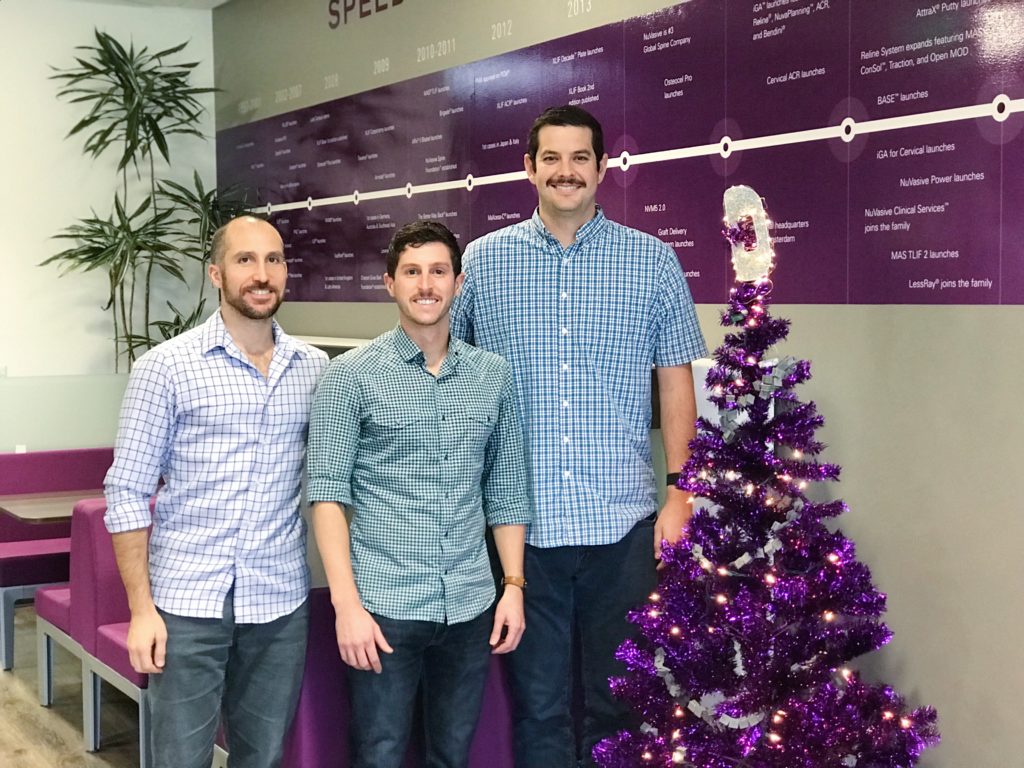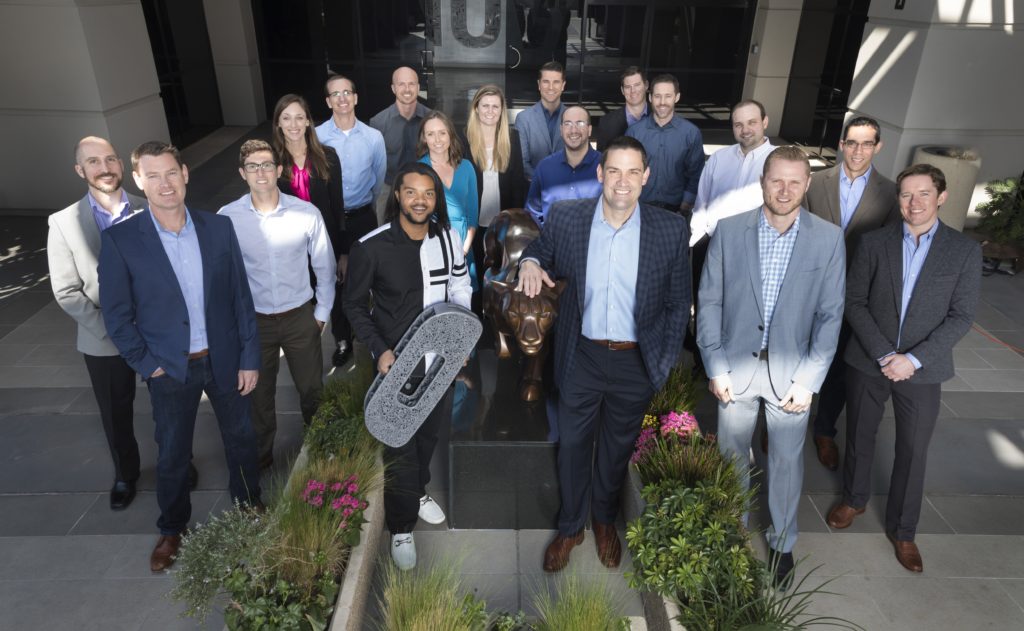We’re featuring the next Development and Marketing leaders to give you an inside look into what it’s like innovating at NuVasive®. The first innovation we dived into was XLIF® Crestline last month (view the interview here), and now we’re showcasing Modulus® XLIF!
Modulus XLIF provides a differentiated offering for the NuVasive flagship XLIF procedure. The Modulus titanium implants are developed using additive manufacturing technology to create an organic, porous architecture. Read the full Q&A on the Modulus XLIF innovators below:

The team behind this innovation includes Marketing leaders, Jim and Brooke, as well as Engineering leaders, Jesse, Shaeffer, Jeremy, and Brent.
What sparked the need for Modulus XLIF?
- Engineering team: There has been a lot of discussion in the spine industry about interbody devices and ways to make them more active in the fusion process. Historically, they were typically treated as static spacers but advancements in technology allow us to design them with more functionality. Advancements in additive manufacturing in particular was attractive to us because it gave us the tools to create a device design that not only looks intuitive and organic, but has some specific characteristics backed by preclinical data.
- Marketing team: Throughout the years, the spine industry has bounced back and forth between two main interbody materials: PEEK and titanium. PEEK implants have traditionally lacked porosity and the innate chemistry for bone ongrowth/ingrowth, and titanium implants have traditionally lacked porosity as well, been very stiff, and have poor radiographic qualities. With 3D printing, and Modulus XLIF, we have been able to address the concerns of Titanium in respect to porosity, stiffness and radiographic imaging characteristics.
What were the resources needed to start this project?
- Engineering team: Additive manufacturing is not only a completely different manufacturing method, but a different design method as well. We needed to learn multiple software packages, the manufacturing process, and really get to know the industry in order to be set up for continued success.
- Marketing team: There weren’t many parts of the organization that didn’t have some sort of touch point with this project. Modulus XLIF is truly a testament to cross functional collaboration, and determination to produce a truly innovative implant. Our surgeon design team was also an integral part of the implant; always encouraging us to test the limits and iterate to make Modulus XLIF better.
Usually the first idea might not be the greatest idea. Is the original idea for Modulus XLIF what it is today? If it has changed, what necessitated the change?
- Engineering team: The original idea, no. Our initial research into the various additive manufacturing technology quickly opened us up to opportunities that we didn’t realize were commercially available in the medical space. Creating porous structures is a “low-hanging fruit” when using additive manufacturing, but generative design opens up additional possibilities and is the real differentiator between Modulus and the rest of the interbody devices out there.
What was your favorite part about the design process and marketing process for Modulus XLIF?
- Engineering team: The reactions from every surgeon we’ve discussed it with. The excitement about the project was infectious and a real motivator to push for greater things.
- Marketing team: I completely agree with the Engineering team here. Having the opportunity to discuss this with our surgeon customers and see the excitement and desire to integrate this into their XLIF practice has been incredibly rewarding. It’s also been a privilege to work with such a talented surgeon design team, and internal development team.
What skills did you have to acquire to be able to create a successful 3D-printed implant?
- Engineering team: We really needed to partner with industry (on the software and manufacturing side) as we didn’t have much experience when we started. With so many unknowns, significant testing and validations are required to ensure a safe device is being put into the market. The team at NuVasive did an incredible job asking the right questions at the right time to quickly navigate that process.
Special thanks to the entire team that worked on Modulus XLIF. One of our strengths at NuVasive is the amount of cross-functional work we do to create the innovative products that ultimately better the lives of patients. Across multiple departments, levels, and creative heads that came together, we’re so proud of the work you all do!

If you’re interested in becoming part of the innovation here at NUVA, search our open roles here.